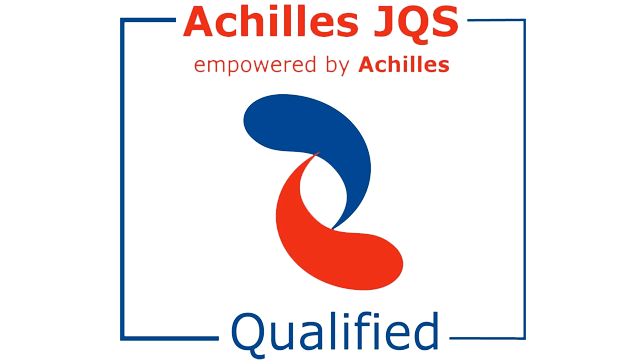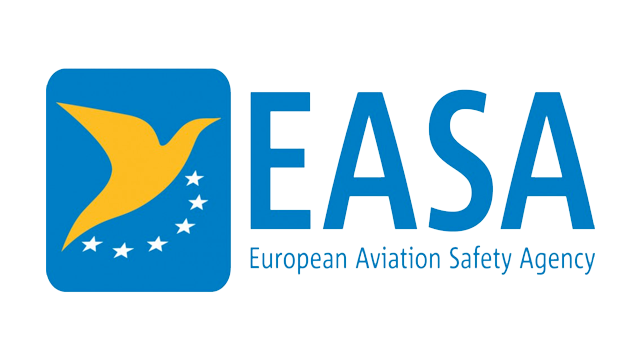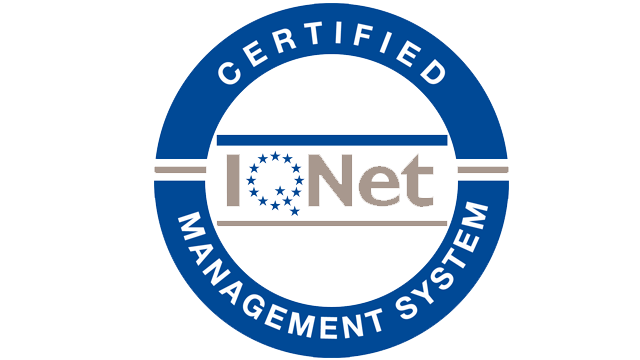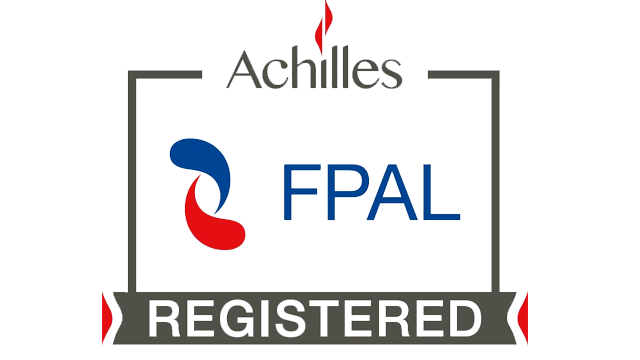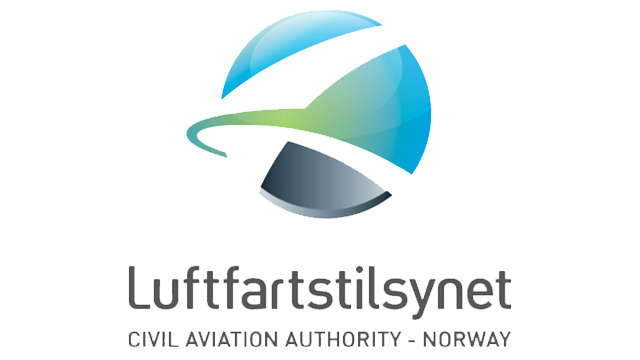
Polar Code
Questions and answers related to the Polar Code
1. Insulated immersion suits & thermal protective aids.
Polar Code requirement:
Adequate thermal protection shall be provided for all persons on board, taking into account the intended voyage, the anticipated weather conditions (cold and wind), and the potential for immersion in polar water, where applicable.§8.2.3.1Polar Code regulation:
For passenger ships, a proper sized immersion suit or a thermal protective aid shall be provided for each person on board and that where immersion suits are required, they shall be of the insulated type.§8.3.3.1.1/2Excerpts from SOLAS impacted by this regulation:
Passenger and cargo ships.
§7.3. Immersion suits and anti-exposure suits.
An immersion suit, complying with the requirements of section 2.3 of the Code or an anti-exposure suit complying with section 2.4 of the Code, of an appropriate size, shall be provided for every person assigned to crew the rescue boat or assigned to the marine evacuation system party.Note: §2.3 "...shall not impede entry into the Iifeboat or seating, including operation of the seat belts in the lifeboat."Note: §2.4 "...the manner in which they are carried or worn, shall not interfere with entry into the lifeboat, occupant safety or operation of the lifeboat."Passenger ships (additional requirements).
Regulation 22 - Personal Life-saving appliances.
§4. Immersion suits and thermal protective aids.
4.1. All passenger ships shall carry for each lifeboat on the ship at least three immersion suits complying with the requirements of section 2.3 of the Code and, in addition, a thermal protective aid complying with the requirements of section 2.5 of the Code for every person to be accommodated in the lifeboat and not provided with an immersion suit.These immersion suits and thermal protective aids need not be carried:4.1.1. for persons to be accommodated in totally or partially enclosed lifeboats.4.2. The provisions of paragraph 4.1.1 also apply to partially or totally enclosed lifeboats not complying with the requirements of section 4.5 or 4.6 of the Code, provided they are carried on ships constructed before 1 July 1986.Cargo Ships (additional requirements).
Regulation 32 - Personal Life-saving appliances.
§3. Immersion suits
3.1. This paragraph applies to all cargo ships. However, with respect to cargo ships constructed before 1 July 2006, paragraphs 3.2 to 3.5 shall be complied with not later than the first safety equipment survey on or after 1 July 2006.3.2. An immersion suit of an appropriate size complying with the requirements of section 2.3 of the Code shall be provided for every person on board the ship. However, for ships other than bulk carriers, as defined in regulation lX/l, these immersion suits need not be required if the ship is constantly engaged on voyages in warm climates where, in the opinion of the Administration, immersion suits are unnecessary.
3.3. lf a ship has any watch or work stations which are located remotely from the place or places immersion suits are normally stowed, including remotely located survival craft carried in accordance with regulation 31.1.4, additional immersion suits of an appropriate size shall be provided at these locations for the number of persons normally on watch or working at those locations at any time.
3.4. lmmersion suits shall be so placed as to be readily accessible and their position shall be plainly indicated.
3.5. The immersion suits required by this regulation may be used to comply with the requirements regulation 7.3. (Note: See Section I for 7.3)
Life-saving appliances covered by the Polar Code and all current SOLAS regulations are defined in the Life-saving Appliance (LSA) Code. The LSA Code covers, amongst other things, lifejackets, immersion suits, anti-exposure suits and thermal protective aids.
Insulated immersion suits for passengers and crew


More information: IMO GUIDELINES FOR THE ASSESSMENT OF THERMAL PROTECTION MSC/Circ.1046

SOLAS requires lifejackets for all persons on board. Immersion suits that do not have built-in buoyancy need a separate lifejacket. The choice of lifejacket will now be influenced by the Polar Code regulation that they be used over an insulated immersion suit (without built-in buoyancy).
Hansen Protection SeaLife lifejackets fullfill SOLAS requirements. In addition, they are designed to be practical, compact and spacesaving.
SOLAS regulations concerning lifejackets:
§2.3 "...shall not impede entry into the
§2.4 "...the manner in which they are carried or worn, shall not interfere with entry into the lifeboat, occupant safety or operation of the lifeboat."



The suits shown are immersion suits for emergency use
Thermal protective aids for passengers
SOLAS definition:
A thermal protective aid is a bag or suit made of waterproof material with low thermal conductance.
Hansen Protection do not recommend the bag type for use in polar waters. We recommend using our SeaPass suit as a suitable thermal protective aid within the framework of the Polar Code.
Thermal protective aids have no built-in buoyancy. To stay afloat with one it must be used with an approved lifejacket. When used with an approved lifejacket, SeaPass is also SOLAS-approved as an uninsulated immersion suit.
Yes. Ascotherm TPA's are all sealed in transparent vacuum bags.
SeaPass suits can be sealed in HP's unique UV-resistant vacuum foil - for longer life and reduced service & handling cost.
Vacuum packing saves space and ensures suits are always in perfect condition and ready for use. Vacuum packing increases the mandatory service interval*, simplifying service logistics, lowering costs and increasing safety and security.
*) Note that some flag states have specific requirements with regards to service intervals for vacuum packed immersion suits. Get in touch with HP customer service for more information
SeaPass can also be used for the thermal protective aid required by the Polar Code under Personal Survival Equipment (PSE) and Group Survival Equipment (GSE) (see §2, below).
SeaPass under polar conditions
A specially adapted version of our SeaPass suit has been used by Børge Ousland and others for polar expeditions, including Prince Harry when "Walking with the Wounded".
Anti-exposure suits for crew
SOLAS regulation for passenger & cargo ships:
An immersion suit, complying with the requirements of section 2.3 of the Code or an anti-exposure suit complying with section 2.4 of the Code, of an appropriate size, shall be provided for every person assigned to crew the rescue boat or assigned to the marine evacuation system party. >
Note: §2.3 "...shall not impede entry into the Iifeboat or seating, including operation of the seat belts in the lifeboat."
Note: §2.4 "...the manner in which they are carried or worn, shall not interfere with entry into the lifeboat, occupant safety or operation of the lifeboat."
Hansen Protection make SOLAS approved anti-exposure work suits (AES) that offer excellent comfort and freedom of movement, at the same time they offer extra safety as they double as insulated immersion suits in the event of an accident.
The recommended suits shown below are insulated suits with built-in buoyancy for maximum safety, comfort and freedom of movement. No separate lifejacket is needed.
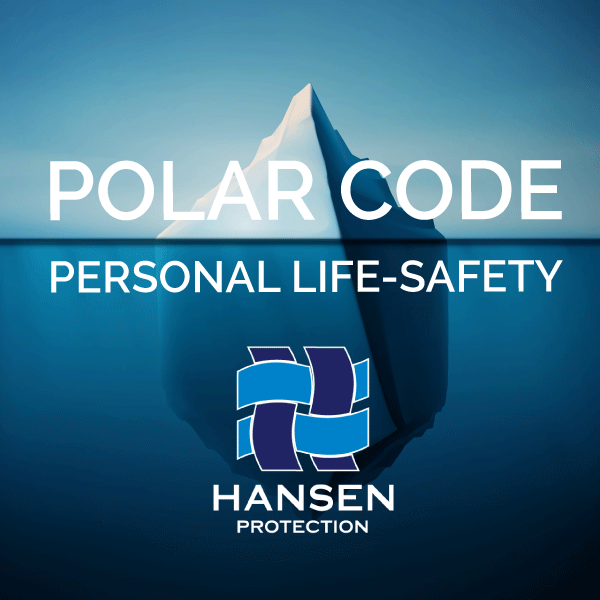
2. Personal & Group Survival Equipment.
The Polar Code ackowledges rescue services may take at least 5 days to arrive in remote areas.
Polar Code requirement:
Resources shall be provided to support survival following abandoning ship, whether to the water, to ice or to land, for the maximum expected time of rescue. These resources shall provide: a habitable environment; protection of persons from the effects of cold, wind and sun; space to accommodate persons equipped with thermal protection adequate for the environment; means to provide sustenance; safe access and exit points; and means to communicate with rescue assets".
§8.2.3.3
In order to comply:
Appropriate survival resources, which address both individual (personal survival equipment) and shared (group survival equipment) needs, shall be provided.
§8.3.3.3.2
Polar Code regulation:
When required, personal and group survival equipment sufficient for 110% of the persons on board shall be stowed in easily accessible locations, as close as practical to the muster or embarkation stations.
§8.3.3.3.3.2
What resources should be included in personal & group survival equipment?
|  |
- Shelter – tents or storm shelters or equivalent – sufficient for maximum number of persons
- Thermal protective aids or similar – sufficient for maximum number of persons
- Sleeping bags – sufficient for at least one between two persons
- Foam sleeping mats or similar – sufficient for at least one between two persons
- Shovels – at least 2
- Sanitation (e.g. toilet paper)
- Stove and fuel – sufficient for maximum number of persons ashore and maximum anticipated time of rescue
- Emergency food – sufficient for maximum number of persons ashore and maximum anticipated time of rescue
- Flashlights – one per shelter
- Waterproof and windproof matches – two boxes per shelter
- Whistle
- Signal mirror
- Water containers & water purification tablets
- Spare set of personal survival equipment
- Group survival equipment container (waterproof and floatable)
Through our Partner Network we supply fully compliant Personal & Group Survival Equipment sets. Contact us for details.
How does the Polar Code affect you?
- Purpose
- Three Zones
- Ship Safety
- Escape & Evacuation
- Personal Life-safety
- Polar Ship Certificate
- Svalbard
- Links
The purpose of the Polar Code is to provide for safe ship operation and environmental protection in the polar regions. It has two parts.
The Polar Code acknowledges that polar waters may impose additional demands on ships beyond those normally encountered. It provides a mandatory framework for ships operating in polar waters. It is implemented through amendments to SOLAS, MARPOL and the STCW. If you operate a SOLAS or MARPOL ship in Arctic or Antarctic waters your ship must comply with all or part of the Polar Code.
Part I safety requirements and Part I manning and training requirements apply to ships certified in accordance with SOLAS and which operate in polar waters.
Part II environmental protection requirements apply to ships that must comply with MARPOL and which operate in polar waters. For non-SOLAS ships that are required to hold a MARPOL certificate (such as fishing vessels), only the Part II environmental protection requirements of the Polar Code apply.



The Polar Code builds a strong first line of defence.
The primary focus is on preventing catastrophic situations before they occur. Here, amongst other things, are vessel’s design and construction of paramount importance. It also considers how to minimize impact if a disaster should occur. It acknowledges the remoteness and extreme conditions of the areas, and that it may take rescue services at least 5 days to get to a vessel in distress.

Escape. Survival craft and muster and embarkation arrangements shall provide safe abandonment of ship, taking into consideration the possible adverse environmental conditions during an emergency. For ships exposed to ice accretion, means shall be provided to remove or prevent ice and snow accretion from escape routes, muster stations, embarkation areas, survival craft, its launching appliances and access to survival craft. In addition, for ships constructed on or after 1 January 2017, exposed escape routes shall be arranged so as not to hinder passage by persons wearing suitable polar clothing; and for ships intended to operate in low air temperatures, adequacy of embarkation arrangements shall be assessed, having full regard to any effect of persons wearing additional polar clothing. Evacuation. | Thermal Lockers & Boxes.
|

Our last line of defence.
It’s not only the Cruise Industry that has discovered exciting potential in the Polar regions. It started with the oil industry. Special rigs now operate in the Barents Sea. Here hypothermia kills in minutes. The rigs’ crews are flown in by helicopter. For this, special survival suits have been developed by Hansen Protection and must be worn by everyone in case a helicopter ditches, or a rig be abandoned.
Hansen Protection have been manufacturing anti-exposure immersion suits since the mid 1970’s. The company's suits are not only the first choice for North Sea and Barents Sea oil workers, they have already been chosen by some of the foremost cruise operators opening the Polar regions.
Despite our immersion suits being the best available, we hope they are never used.
But remember! When all else fails, insulated immersion suits and thermal protection aids from Hansen Protection are your last line of defence. They are your personal protection against the polar elements.
The Certificate shall be supplemented by a Record of Equipment for the Polar Ship Certificate:
§2.1 Life-saving appliances
1 Total number of immersion suits with insulation:
1.1 for crew
1.2 for passengers
2 Total number of thermal protective aids
§3 Personal and Group Survival Equipment
1 Personal survival equipment – for number of persons
2 Group survival equipment – for number persons MEPC 68/21/Add.1
- APPENDIX 1
Rules for passenger ships on Svalbard
This information applies for Norwegian and foreign passenger ships operating in the Norwegian territorial waters at Svalbard. The information applies to ships operating at Svalbard for a longer period and for ships on an international voyage, visiting the archipelago.
Choose Hansen Protection for compliance and low total cost of ownership.

This is the heading
From one of the world's foremost developers and manufacturers of survival equipment
Hansen Protection has been a pioneer in safety at sea since we launched kapok lifejackets in 1932.
Our current range continues the company's strong traditions, where our greatest concern is to ensure optimal functionality and performance for all types of work at sea.
A first class survival suit can mean the difference between life and death.
As one of the world's foremost developers and manufacturers of survival equipment, Hansen Protection can offer a wide collection of survival suits.Survival can never be guaranteed, but we can guarantee that our survival suits satisfy the highest demands for safety.
Survival suits are obligatory for personnel on oil rigs, passenger ferries, merchant and fishing fleets plus in offshore helicopter transport.
Our dry suits provide sufficient buoyancy and protect against heat loss, and thus increase the survival time in cold water. All suits are tested and approved according to the strictest national and international standards.

